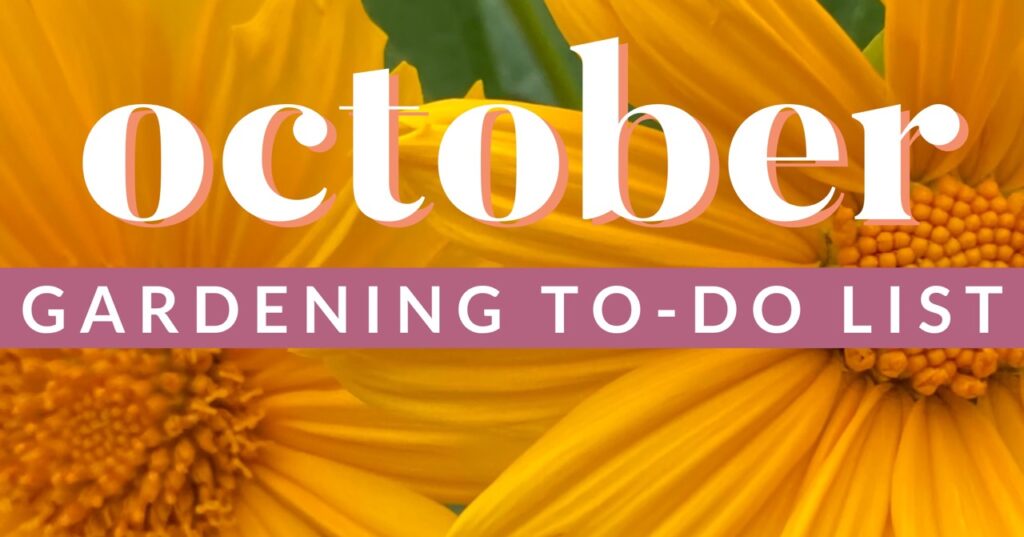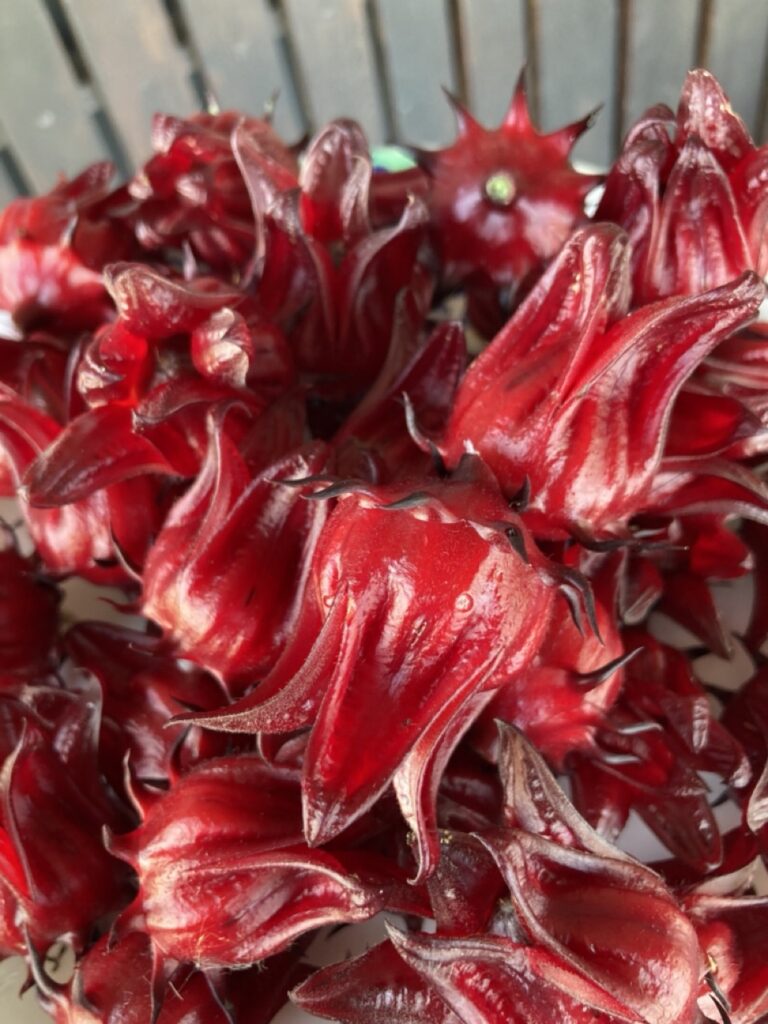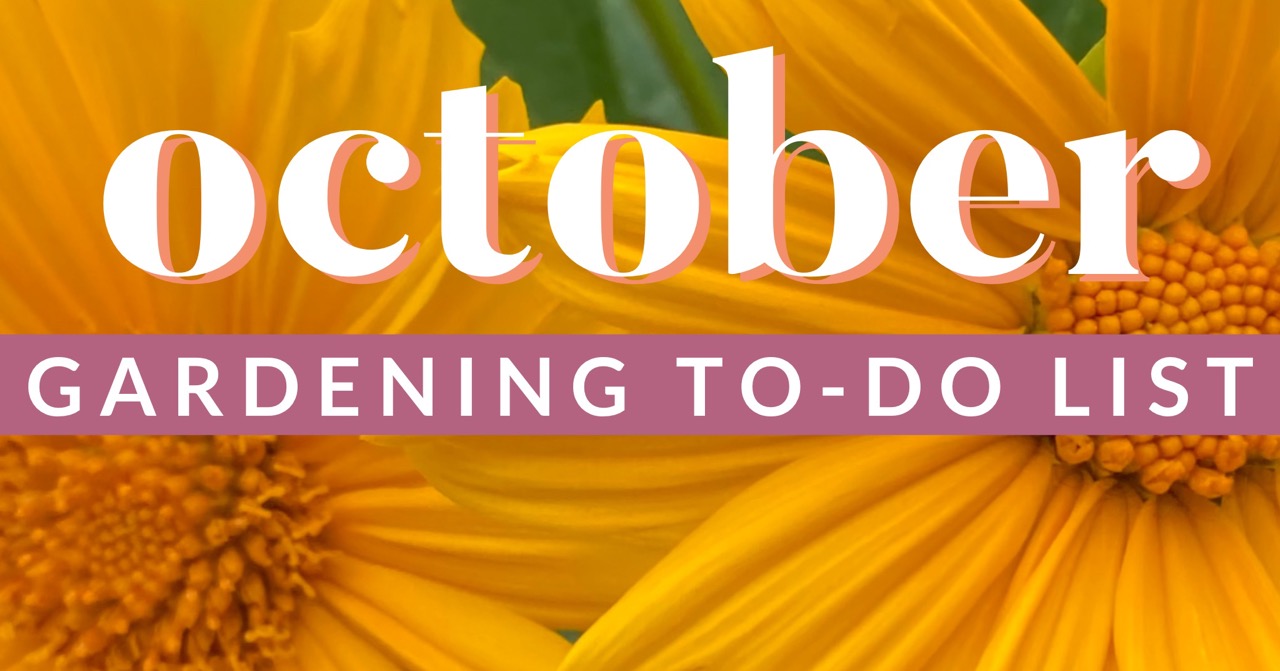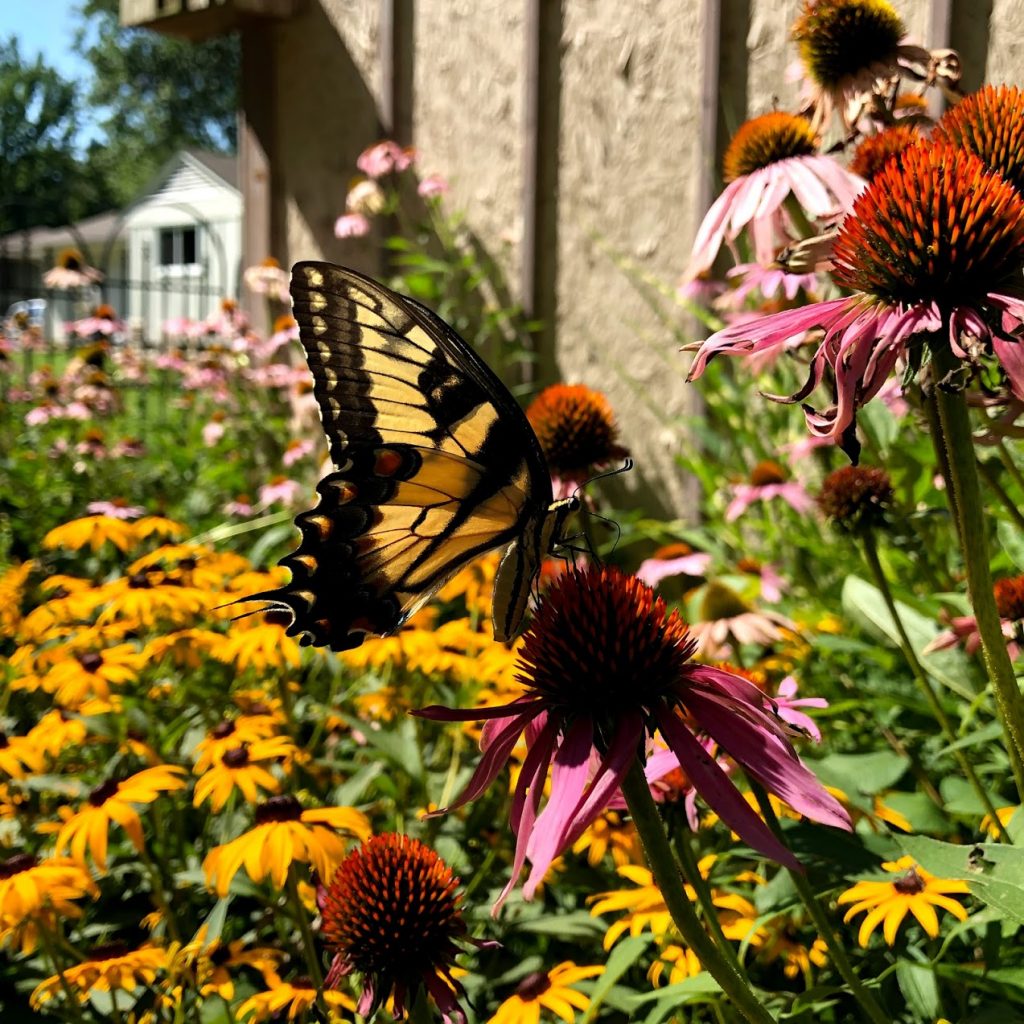Fall is officially here! The rainy season has come to an end, hurricane season is in full force, and winter gardening prep is now the #1 priority. Whew…what a rush! Although many southern states don’t get the color change that Midwest do, we are all still grateful for the slightly less oppressive heat and cooler nights. I can already smell the campfires coming over the next couple months.
That being said, it’s also a busy time for farmers and home gardeners. So, here is your list of things to do in your yard during the month of October. Pay attention to the garden, house, shed, orchard, animals, and of course… the kiddos!
This is your October Gardening To-Do list for Zones 9-11. For a list specific to USDA Growing Zones 3-8, click here.

In the garden
- Plant seeds for: carrots, onions, radishes (all types), turnips, and other root crops. It’s also important to stagger your lettuce and kale plantings, so they have various ripening times.
- Plant baby starts of: Beets, broccoli, cabbage, cauliflower, collard greens, kale, sugarcane, Swiss chard, etc. If you have any tomato (or other nightshade) seedlings left – go ahead and get them in the ground now too. Last chance on those guys.
- Cover soil with straw! Never leave garden soil exposed to the elements. Remember, most veggies prefer a bacterially dominated soil, which is created by decomposing grass and straw.
- Apply Fall probiotic spray (I use BioAg by SCD Probiotics) to all gardens, flower beds, and orchard soil. I use this both as a foliar spray and soil drench to help keep microflora healthy and the soil biome in pristine condition.
- Test garden soil and make necessary fall amendments. As a general rule, this time of year is the most ideal for adding a LIGHT layer of compost (you don’t want to stimulate new growth), and for spreading wood chips and mulch.

In the Greenhouse
- Plant another round of: kale, cabbage, Swiss chard, radishes, diakon, mixed greens, peas, etc.
- Remove shade cloth and get ready to apply winter plastic that may need replacing.
- Look for areas that have mold, mildew, or fungus after the rainy season. Address each appropriately with neem, Basic H cleaner, etc.

In the Food Forest
- Harvest tropical spinaches, edible hibiscus, sweet potato greens and other low-growing plants. Continue harvesting tropical cherries (Barbados, Cherry of the Rio, Pitangatuba, etc.) and other fall tropical fruit.
• Avocado
• Barbados cherry
• Carambola • Citrus
• Dragon Fruit • Fig
• Guava
• Hibiscus (edible)
• Katuk (leaves & berries) • Moringa
• Mulberry
• Passion Fruit
• Peanut Butter Fruit
• Pecan
• Persimmon
• Peruvian Apple Cactus • Soursop
• Strawberry tree
• Sugar Apple
• Sweet potato harvesting • Tropical spinaches
- Spray all fruit trees with probiotic spray, neem oil (for bugs and fungus control), and keep areas beneath the trees clear of waste.
- Fresh compost and mulch around the base of the trees for winter. You can also use chopped leaves from trees around your yard. Do NOT use other fruit tree leaves if you can avoid it, because you don’t want to let any fungus or disease overwinter in the food forest.
- Divide plants that are big enough to multiply and share (i.e. comfrey, berries, perennial flowers, etc.)
- Harvest any remaining summer herbs (dry them, make tinctures, give away, or make an herbal broth for cooking). Some herbs can actually be frozen in olive oil (using ice cube trays) for use over the winter.
- STOP planting tropical trees that are cold sensitive, like mango, avocado, strawberry tree, etc. Wait until Easter time to plant these in the ground. If you want to purchase them this fall, just be sure to leave them in a pot until springtime. This can actually be beneficial, because you can purchase a smaller tree, upsize the pot, and let it fill in over the winter. Then when spring arrives, you have a tree that has grown a foot and is acclimated to your particular site.
- Save seeds from: Roselle, cranberry hibiscus, and other tropical plants that die back for the winter. Also, get ready to start harvesting and drying Roselle calyx for a nice winter tea.
- Chop and drop: Mexican Sunflower, moringa, comfrey, pigeon pea.

In the Shed
- Get out fall decorations
- Clean and oil all tools
- Consider adding a fuel injector cleaner to 2-cycle engine equipment to give them a fall tune-up.
- Add mouse traps. TIP: You can also soak cotton balls or fabric in water with peppermint essential oil and put them in the corners to deter mice.
In the Chicken Coop for October
- Feed extra protein (meal worms, black oiled sunflower seeds, bugs, etc.) to help them with molting season.
- Purchase suet blocks (>5% protein) as you see them on sale for winter prep.
- Clean and sterilize your coop and get ready for winterizing (have extra straw on hand for the winter months).
- Add probiotics to your water to get birds healthy before winter. You can use a mixture of honey, apple cider vinegar, and garlic powder as one approach. I also rotate in BioLivestock, which is a blend of probiotics, beneficial microbes, and bio-fermented organic acids.
- Add garden and flower bed cuttings to their run for them to “go through” and eat bugs and seeds before composting them. I love adding Spanish needle because of it’s amazing health benefits for animals and livestock.
- Feed pumpkin and squash to chickens. It helps boost their immune systems and can be a preventative for worms. NOTE: Pumpkin seeds are NOT a proven treatment for worms, but a great part of your preventative maintenance regime.

Around the House
- Clean out gutters and eavestroughs
- Check caulk around windows and doors
- Check / change light bulbs around the yard
- Chop leaves as they fall by mowing them up. Never rake and put them to the road, because you are literally sending nutrients away from your yard.
- Power wash sidewalks, sides of house, etc.
- Change air filters on HVAC and check pilot lights on your heater before turning everything on. It’s also smart to vacuum out all ductwork / register vents and add a few drops of essential oils to them to keep things fresh.
- Fall clean out of the garage and shed
- Check batteries on carbon monoxide detectors (replace every three years) and check batteries on smoke detectors.

Perennial Flower Beds in October
- Cut back spent plants, but leave as much as you can for winter interest, especially if there are seed heads. I recommend pruning back fully in the spring, because many butterflies and beneficial insects have already laid eggs and are in a chrysalis form on your plants now, and they will not hatch until spring.
- Plant winter annuals: pansy, cosmos, zinnia, viola, snapdragons, etc.
- Divide large perennials and multiply in your garden OR share with friends.
- Cover all soil with either compost, chopped leaves from your yard, or wood chips. NEVER leave your soil exposed to the winter elements.
Ideas for Kids

- Make a fort with sticks and branches and then cover in leaves
- Use peanut butter and spread on the trunks of trees, then press birdseed into it to attract woodpeckers
- Fall nature walks are a must!
- Take the kids to a greenhouse this fall. Many local nurseries offer free fall activities for kids, pumpkin patches, etc.
- Buy each kid a tree / shrub to plant in the yard or food forest. Help them pick it out and let them know it’s “their tree”
- Consider teaching kids a new outdoor sport or activity






